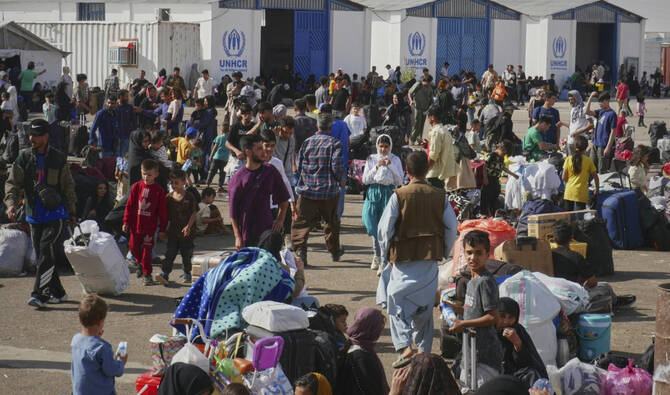The United Nations says that in just 16 days, more than 500,000 Afghans have been compelled to flee Iran. This large movement of people began after the recent 12-day conflict between Israel and another group ended.
Unprecedented Deportation Surge of Afghans After Regional Conflict
The deportation numbers have reached levels not seen in recent years and may mark one of the largest forced migrations in the current decade.
Iran had been planning for months to send undocumented Afghan workers back to their home country. These workers usually take up tough and low-paying jobs in Iranian cities and rural areas. Despite their contribution to labor markets, their legal status remained uncertain.
The International Organization for Migration (IOM) reported that between June 24 and July 9, over 508,000 Afghans crossed back into Afghanistan through the border with Iran. On some days, the numbers were shocking. On one Friday, about 51,000 individuals crossed the border. This happened just before a major deadline set by the Iranian government for all undocumented Afghans to leave the country.
Trump Declares Middle East Peace, But Iran’s Missiles Rain Down Moments Later
Iran’s actions became more aggressive after claims—largely unverified—began spreading about Afghan nationals spying for Israel. These claims were linked to the earlier conflict and led to a sharp rise in forced deportations. However, critics believe that Iran may be using these accusations to speed up the removal of Afghan migrants, something the country has long planned to do.
Life After Expulsion: Harsh Conditions at the Border
Once deported, Afghan migrants face difficult living conditions. Many of them reach Islam Qala, a town on the Afghan side of the border, only to wait for hours in the open sun. The temperature in this region often reaches 104 degrees Fahrenheit (40°C). There is little shade, limited access to clean water, and overcrowded reception centers.
The UN migration agency shared that the situation is very serious. In just one week in July, over 250,000 Afghans arrived at the border. Nearly 400 children traveled alone or became separated from their families.
🛢️ Billion-Dollar Blow! U.S. Cracks Down on Iran’s Covert Oil Empire Fueling Middle East Chaos
Many of the Iranian authorities ejected individuals who had spent years living in Iran. Some carried basic legal documents, while others lived without any papers. Still, the police suddenly disrupted their lives. Officers picked them up, sent them to detention centers, and then transported them across the border—often without letting them say goodbye or gather their belongings.
Footage from the border shows hundreds of people standing in line. Some adults are holding children. Others are searching for food and shelter. The summer heat makes the situation worse. Migrants reported that officials kept them in holding centers without proper food or water. Some shared how guards forced them to pay large amounts of money before expelling them.
Global Concern Grows Over Iran’s Crackdown on Afghans
The situation has drawn criticism from international observers. Reports mention that Iran’s state media broadcast footage where police chased migrants—mostly Afghan nationals—or loaded them onto buses. In some cases, authorities dropped the migrants off at unknown locations.
State media also released videos in which they claimed an Afghan “spy” admitted to working for Israel. However, no one has verified these claims, and officials have not presented any solid evidence. This has led to questions about the real motive behind the deportations.
Iranian authorities say their actions are driven by national security concerns. They have also said that undocumented workers must leave the country. Meanwhile, some employers in Iran say they want to pay the Afghan workers before they leave, but the sudden crackdown has made that difficult.
Did Trump’s B-2 Bombing Pushed Iran to Block Hormuz and Paralyze Europe?
News from within Iran shows authorities arresting migrants at workplaces and in public areas. Officials often take these individuals to detention centers and process them for deportation. Border authorities are enforcing strict exit policies, sparing no one—even those who carry some form of legal paperwork.
The events unfolding along the Iran-Afghanistan border reveal the scale and urgency of this mass movement. Officials are breaking apart families. Children are losing access to schools. And thousands are struggling to survive in temporary shelters after officials forced them to leave everything behind.
This forced return of over half a million Afghans in just over two weeks marks a grim chapter in regional migration history, with global agencies now watching the situation closely.

